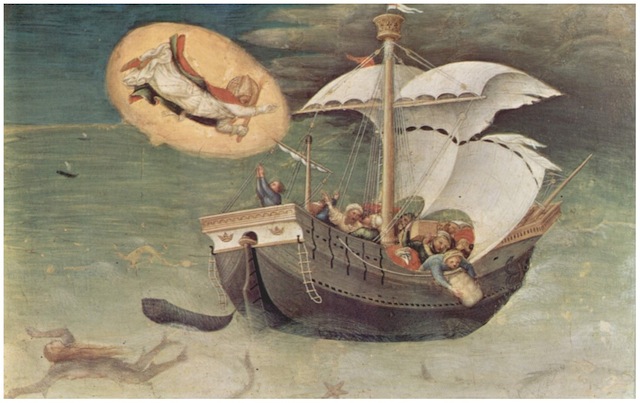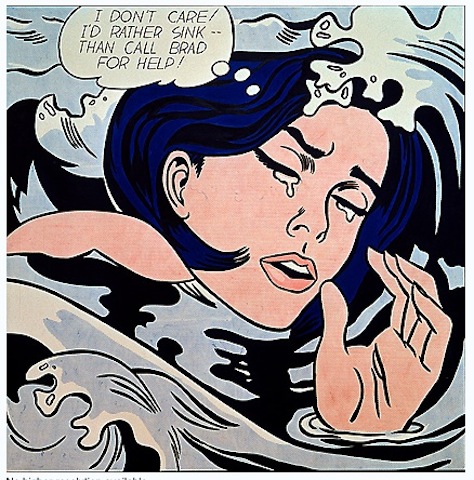AT SEA
Renaissance pictorial conventions are not necessarily the most effective for creating symbolic images.
“St. Nicholas of Bari” by Gentile da Fabriano ( 1370-1427– i.e., pre-Renaissance) is a wildly irrational piece in its formal logic (floating as if in mist rather than water, the ladder and skiff in scale with the ship but the crew oversize, the flying saint, etc.) but entirely convincing as an illustration of miraculous intervention. One demonstration of its effectiveness is that even without a label we would know more or less what it’s about.

Whereas even with the retro costumes, Eugene Delacroix’s lively piece might be any storm-tossed boat if we weren’t informed of the subject. The spectacular details of sea and sky and lashing sails are what engages him. Very French Romantic, but thin on miracles.

Which brings us, perhaps a little abruptly, to “Drowning Girl” by Roy Lichtenstein. It illustrates a symbolic rather than an actual moment. Even without the text we would have a pretty good idea of what it’s about. In its knowing disregard of pictorial literalism, it circles most of the way back to Fabriano–closer to him than to Delacroix.
